Love-in-Idleness
Adapted from A Midsummer Night's Dreamby Miss Alisoun Probert (et al.)for Mua School for the Deaf

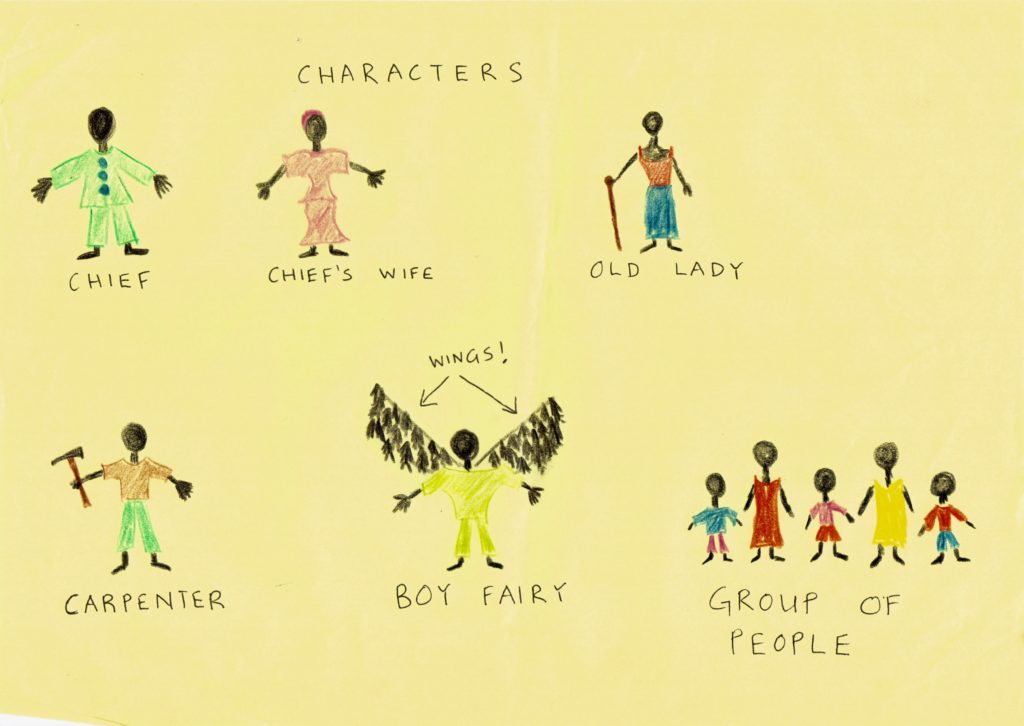
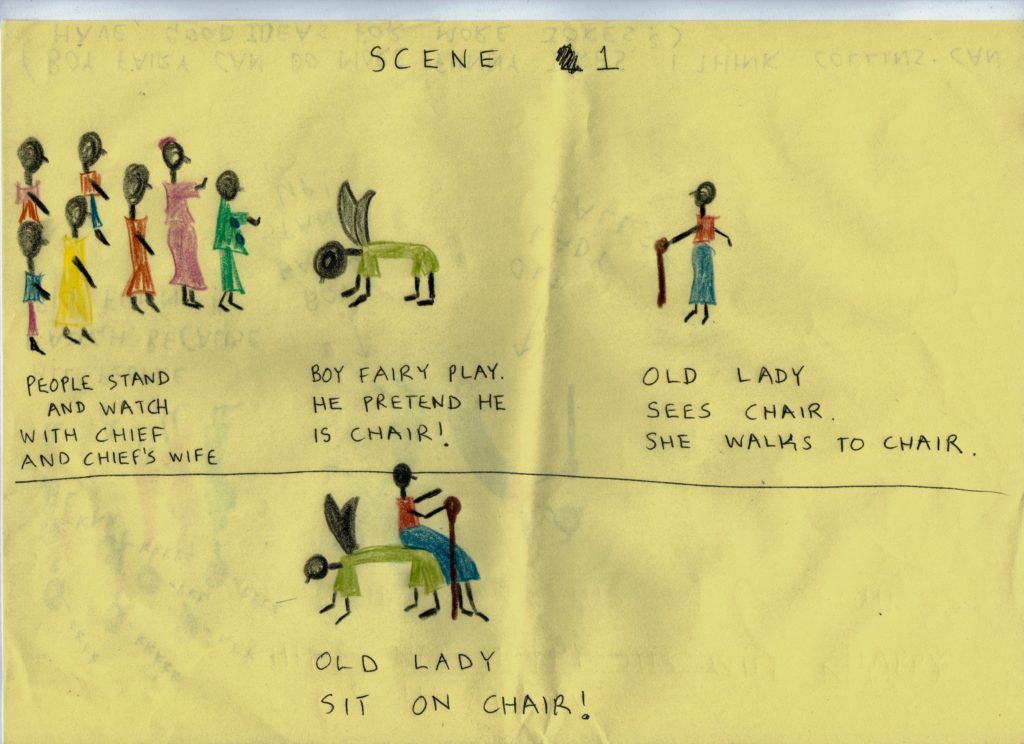
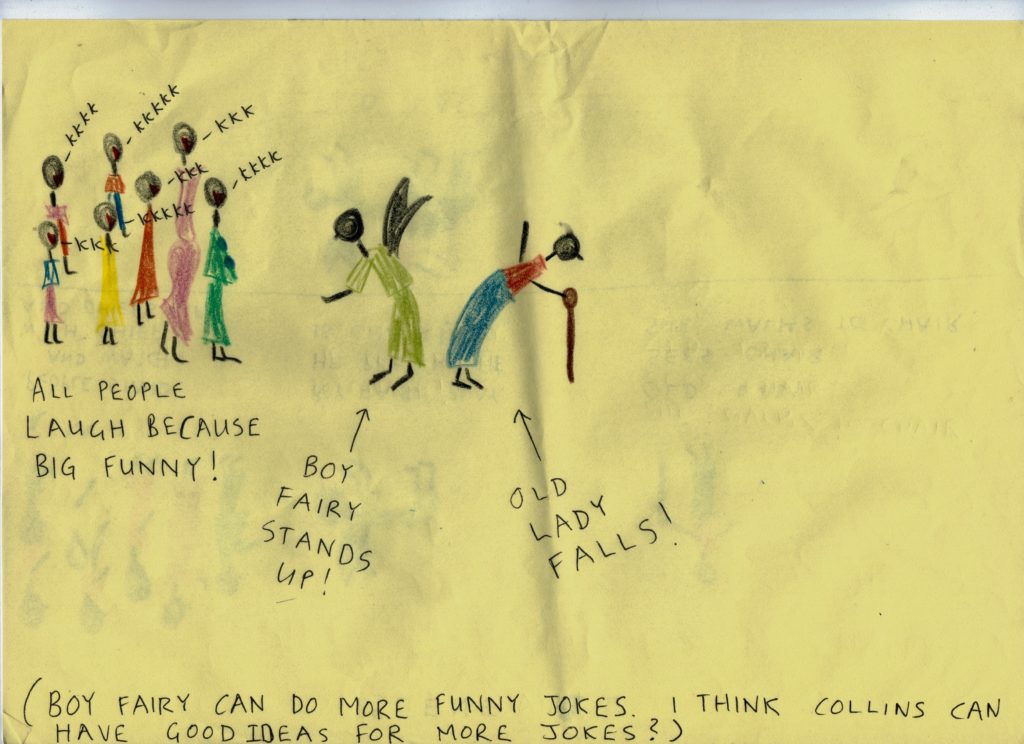
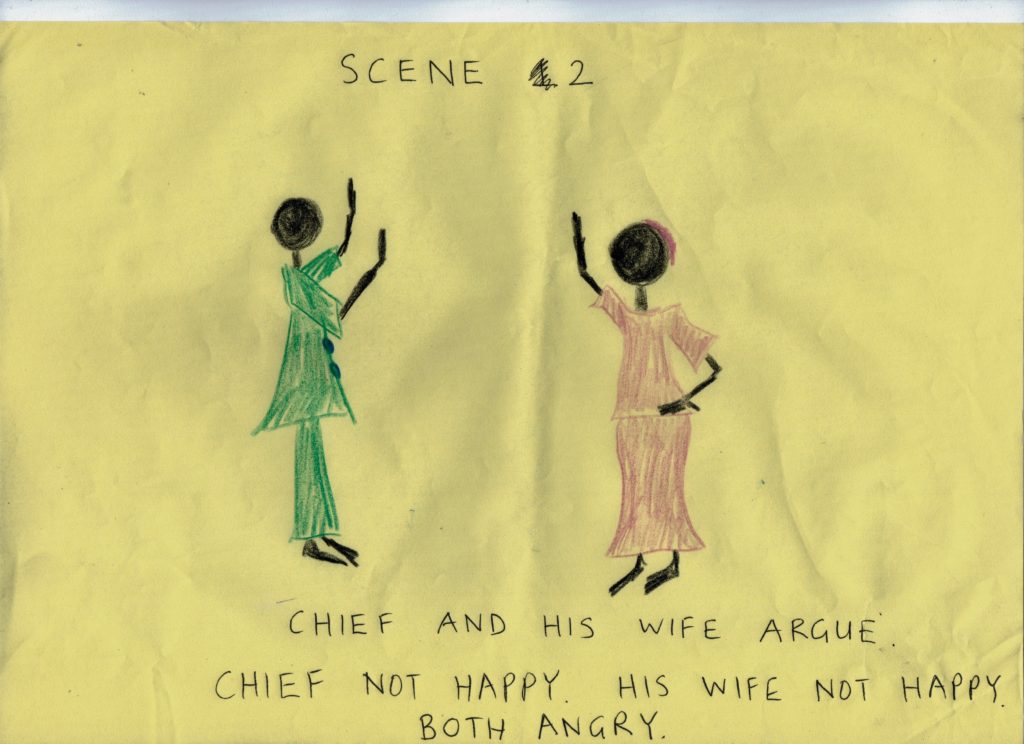

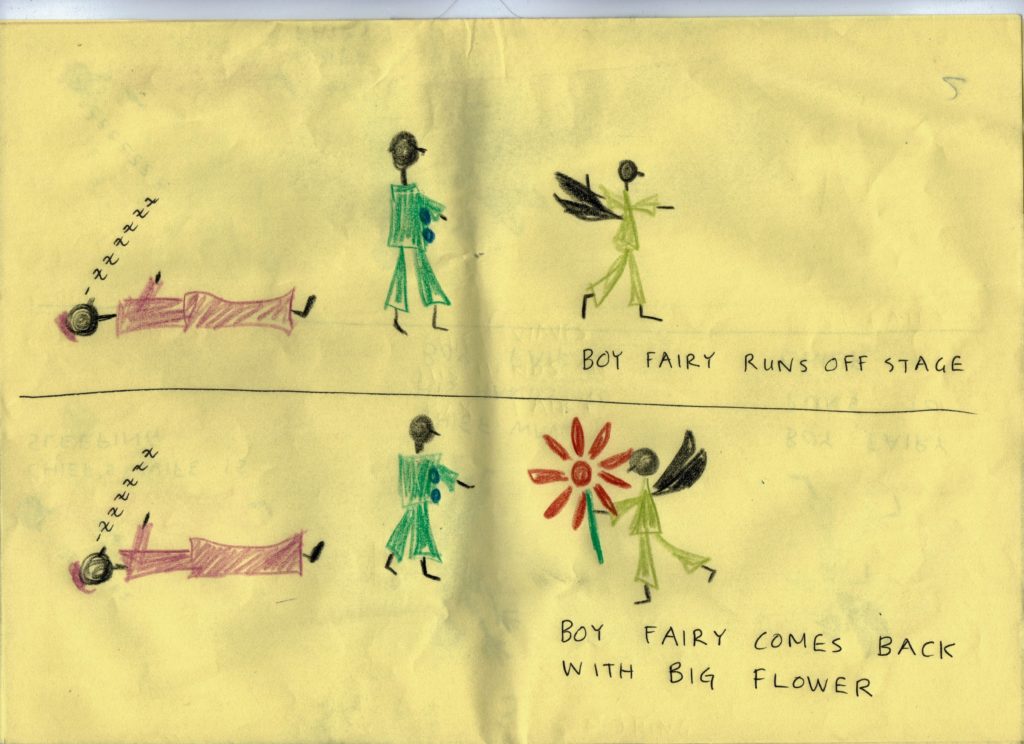
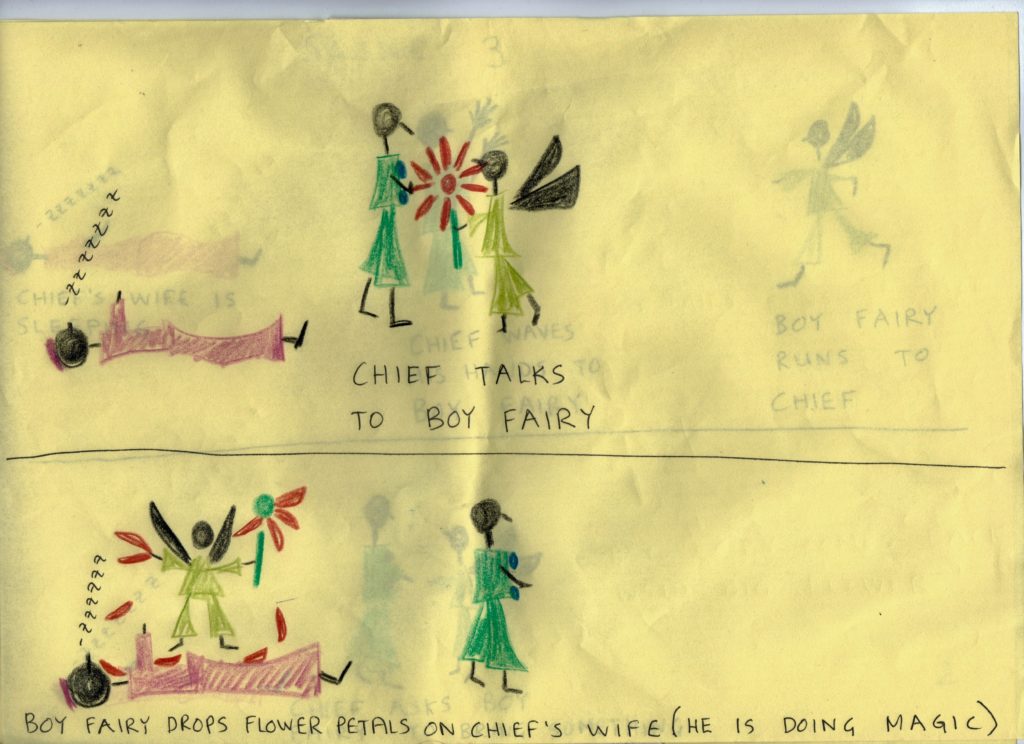
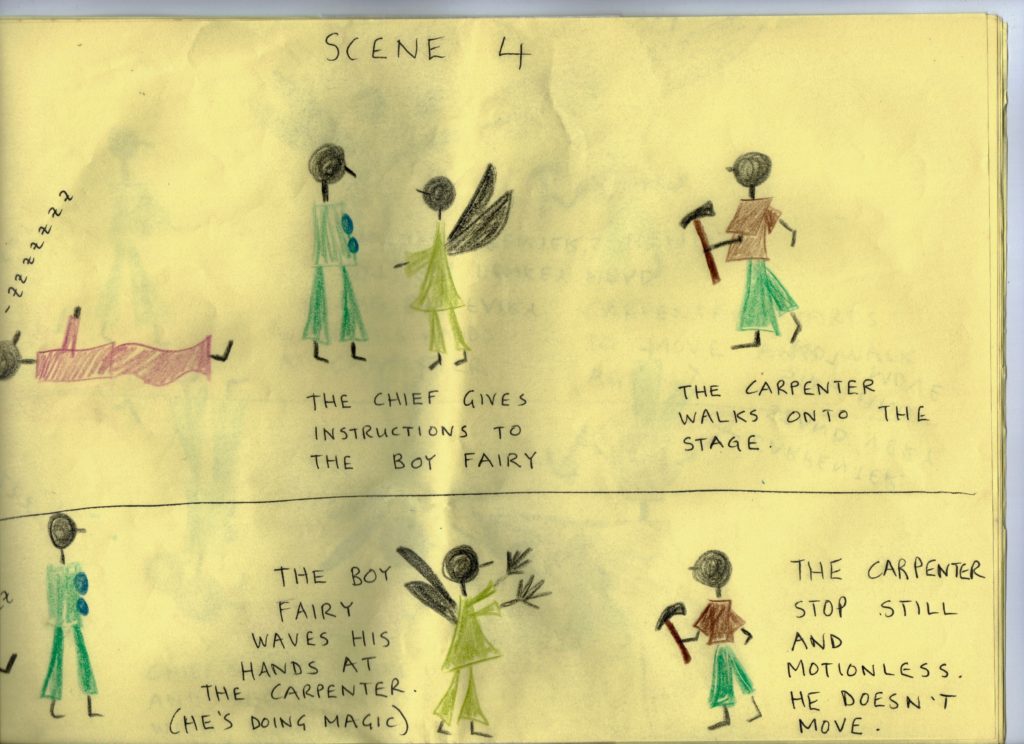
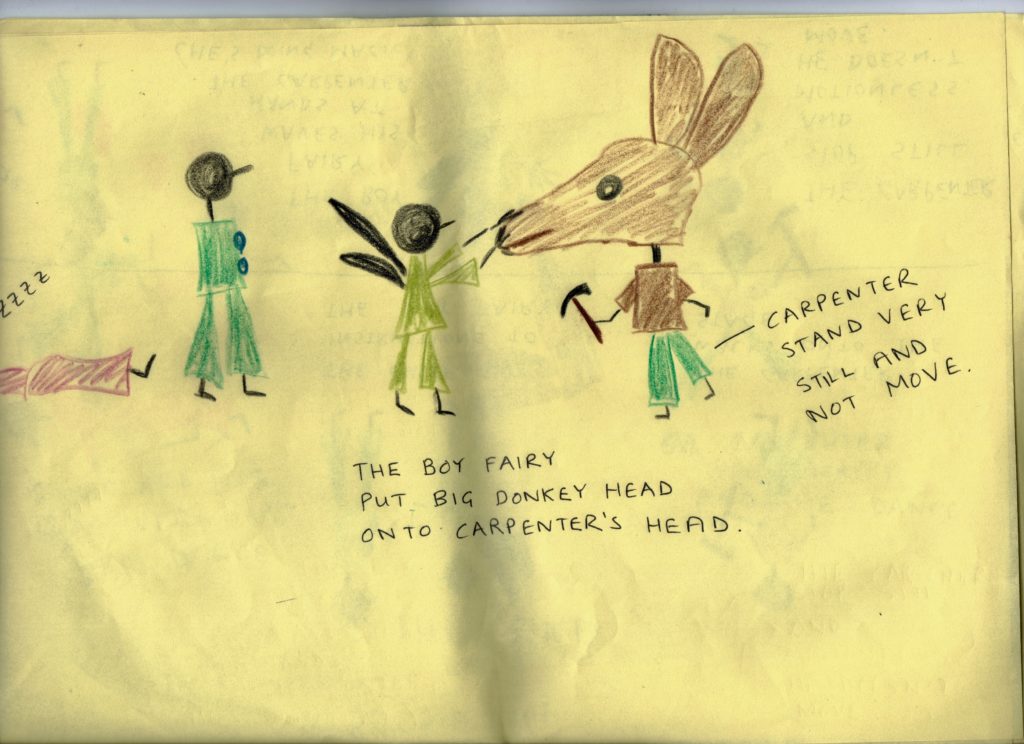

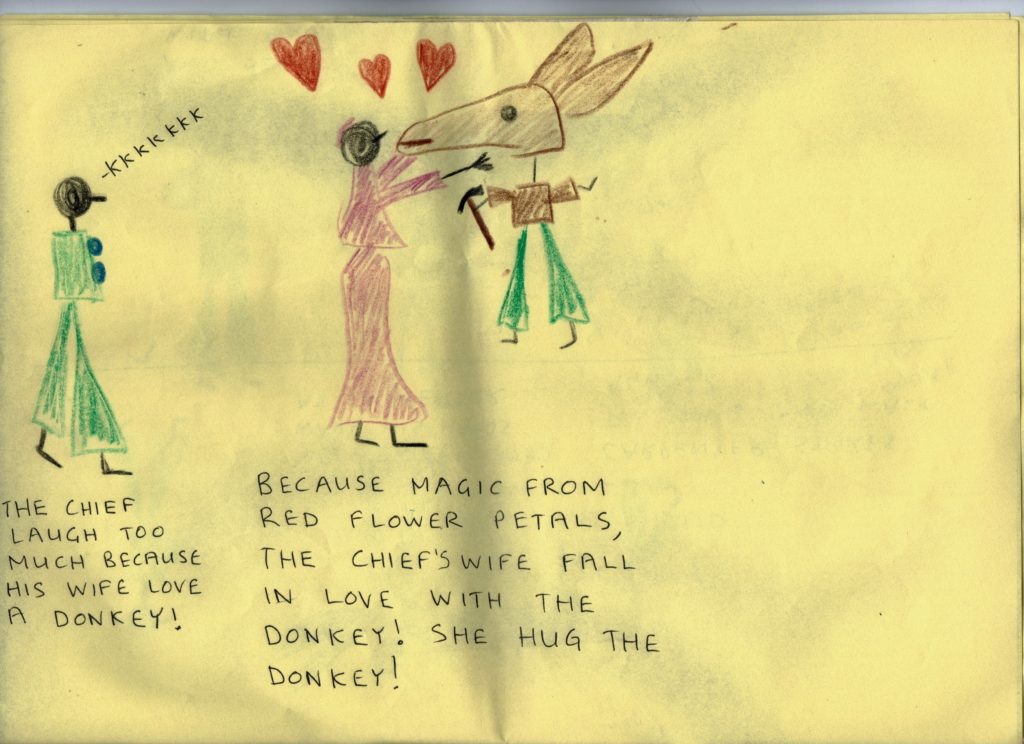
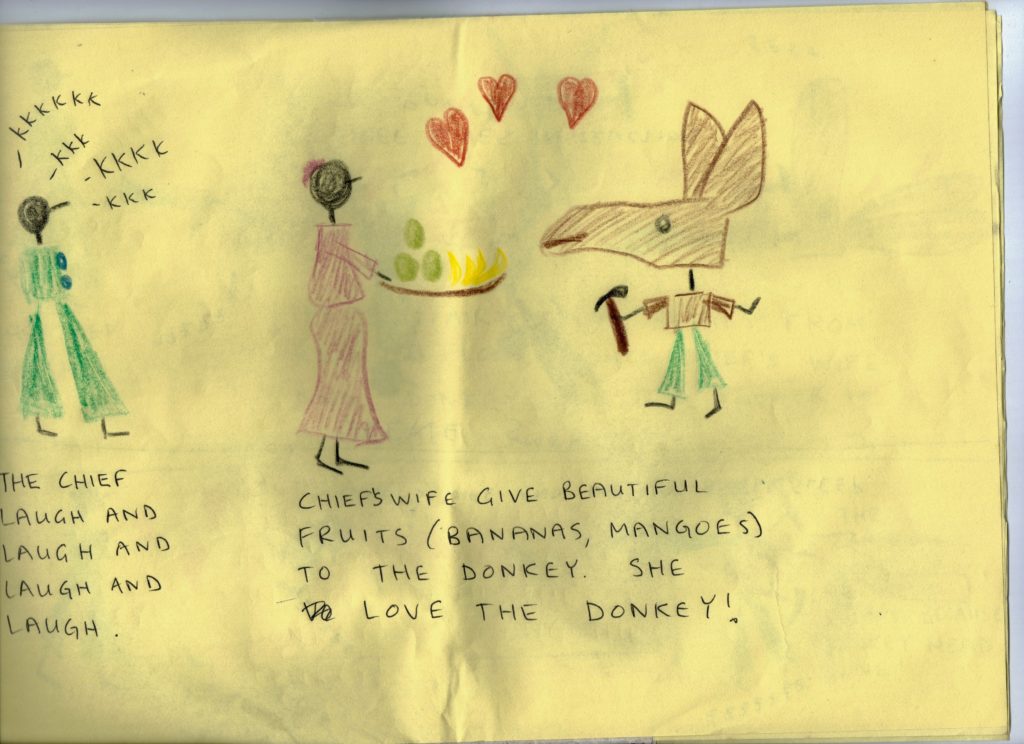

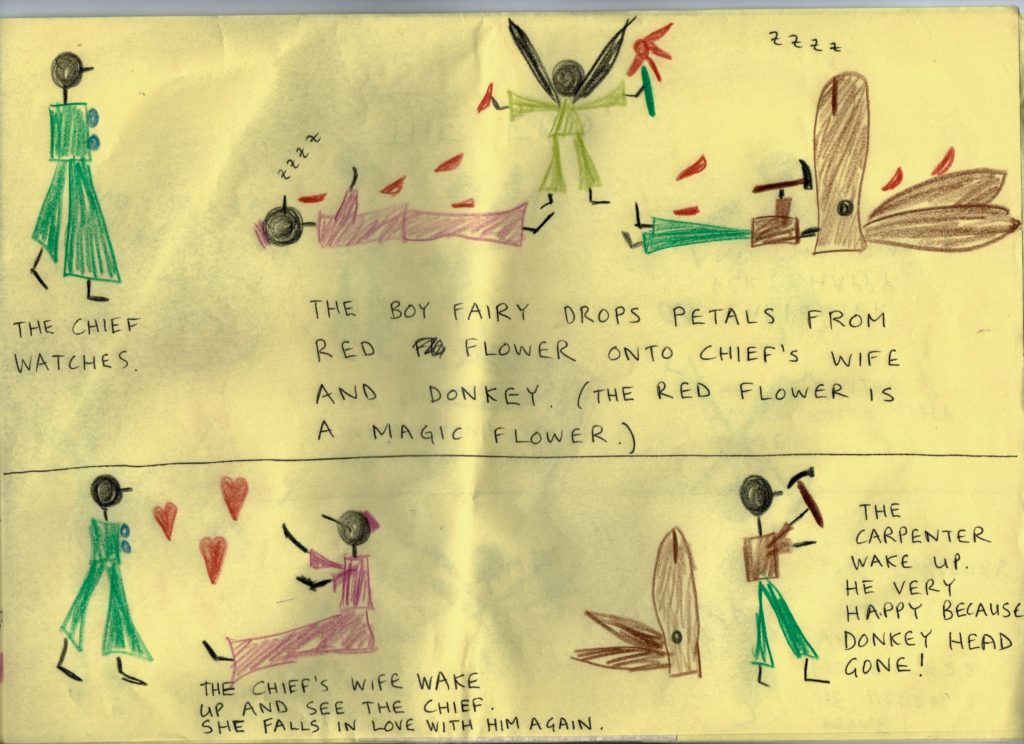
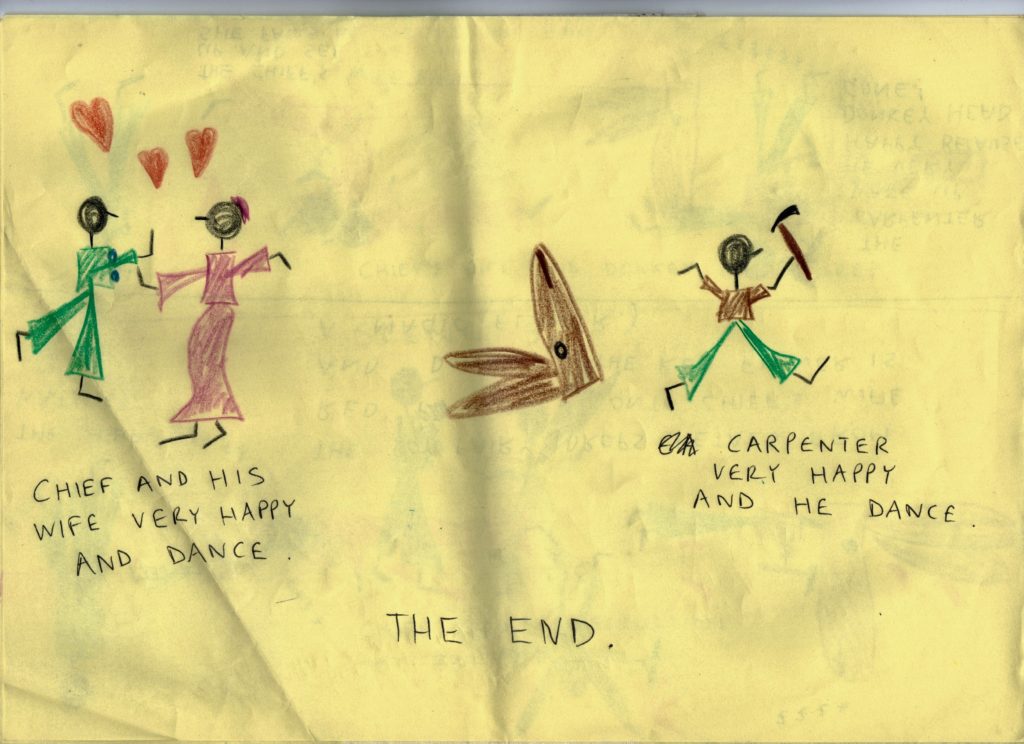
“A Midsummer Night’s Dream was suggested as a suitable plot by Mrs. Veronika Probert. Mr. Martin Probert simplified the plot. Miss Alisoun Probert Malawianised it and drew the pictures and wrote the text. Then those in Malawi further Malawianised the plot.”
[The following note is contributed by Miss Alisoun Probert.]
The story boards have been written in Alisoun's best attempt at what is sometimes referred to as 'Deaf English'.
'Deaf English' is perhaps best described as a 'pidgin' between English and a signed language.
The grammatical structure of signed languages makes use of the 3D space in front of the signer, and also makes use of things such as the fact that speed of signing can be varied, facial expressions accompanying signs can be varied, and something different can be signed with each hand simultaneously.
(Whilst signed language is not universal, the grammatical structure of signed languages across the world generally has much in common even though the vocabulary is generally very distinct. There is something known as 'International Signing' which is not a full language in itself but makes use of the grammatical structure that is common to signed languages in general and uses a lot of iconographic signs to replace regional vocabulary. Although Alisoun has learned some Malawi Sign Language vocabulary, she is generally using International Signing when communicating with deaf adults in Malawi such as the deaf teachers at Mua Deaf School.)
Owing to the very different structure of signed languages from spoken / written languages, and especially to the fact that two signs can be produced simultaneously on each hand, it is absolutely impossible, for example, to write English in Malawi Sign Language (or International Sign) 'sign order'.
The closest is thus 'Deaf English' which, in this case, is an attempt to meet half way between International Sign and English.
As 'Deaf English' is not a full language, it only makes sense to the deaf reader up to a point and so [Alisoun] has added pictures to aid comprehension.